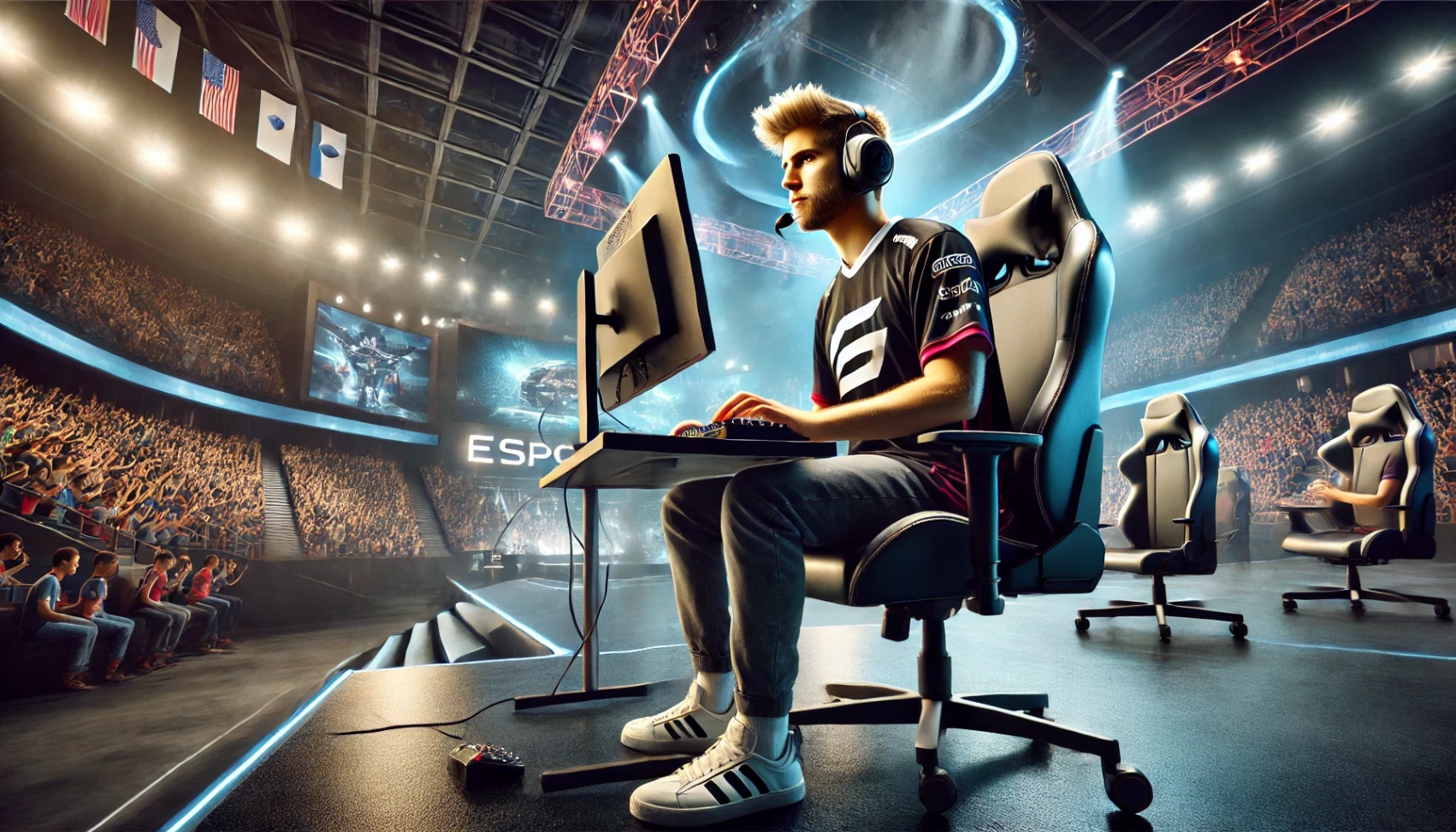eSports has become a billion-dollar industry, with top players earning millions through tournaments, sponsorships, and streaming.
This article dives into the highest-paid eSports players, the games that propelled them to fame, and the factors driving their success.
Discover the financial landscape of professional gaming and what it takes to reach the top.
eSports Earnings Overview
eSports earnings come from diverse sources, reflecting the industry’s growth. Here’s a breakdown:
- Tournament Winnings: Players earn prize money in tournaments with multi-million-dollar prize pools.
- Sponsorship Deals: Brands pay players to promote their products.
- Streaming Revenue: Platforms like Twitch and YouTube pay through subscriptions, ads, and donations.
- Team Salaries: Players get steady income as part of eSports teams.
- Merchandise and Collaborations: Earnings come from branded merchandise and gear.
- Content Creation: Additional income comes from gaming content on social media.

Highest-Paid Players: A Breakdown
eSports has become lucrative, with top players and teams earning substantial incomes. Here’s a breakdown of the highest earners:
Individual Players
Professional eSports players earn millions through tournaments, sponsorships, and streaming, highlighting the industry’s potential.
Here’s a list of some of the highest-paid individual players and their games:
Johan “N0tail” Sundstein
- Earnings: Over $7 million
- Game: Dota 2
- Known as the captain of OG, a team that won back-to-back Dota 2 International championships in 2018 and 2019.
Kyle “Bugha” Giersdorf
- Earnings: Approximately $3.6 million
- Game: Fortnite
- Rose to fame by winning the Fortnite World Cup Solo competition in 2019.
Lee “Faker” Sang-hyeok
- Earnings: Estimated annual salary between $7 and $8 million
- Game: League of Legends
- A legendary mid-laner known for his exceptional skills and long-standing dominance in competitive play.
Peter “dupreeh” Rasmussen
- Earnings: Over $2 million
- Game: Counter-Strike: Global Offensive (CS: GO)
- Member of Astralis, contributing to multiple Major wins in CS: GO.
Ian “C6” Porter
- Earnings: Over $1.4 million
- Game: Call of Duty
- Known as one of the most decorated Call of Duty players in history.
Teams or Organizations
Top eSports teams earn millions and boost players’ incomes through salaries, sponsorships, and visibility.
Here’s a list of the highest-earning teams and their impact:
Team Liquid
- Earnings: Over $53 million in total prize money
- Games: Dota 2, Counter-Strike: Global Offensive, StarCraft II
- Known for its consistency and support for players, enabling them to build lucrative careers.
OG
- Earnings: Over $38 million
- Games: Primarily Dota 2
- Home to top players like Johan “N0tail” Sundstein, OG’s dominance in The International significantly raised individual earnings.
Team Spirit
- Earnings: Over $29 million
- Games: Dota 2 and CS: GO
- Their victory at The International 2021 skyrocketed both team and player incomes.
Fnatic
- Earnings: Over $18 million
- Games: League of Legends, CS: GO, Dota 2
- A strong legacy in eSports, Fnatic nurtures players who achieve significant personal earnings.
Cloud9
- Earnings: Over $11 million
- Games: Valorant, CS: GO, League of Legends
- Renowned for building global fanbases and expanding players’ earning potential through branding and sponsorships.
Factors Driving Earnings
Several key factors contributing to their financial success influence eSports players’ earnings. Here’s a list of the main drivers behind these earnings:
- Game Popularity: More popular games attract larger audiences, bigger tournaments, and higher prize pools.
- Sponsorship Deals: Brands pay top players for endorsements, increasing their income significantly.
- Streaming Platforms: Twitch and YouTube provide revenue through ads, subscriptions, and viewer donations.
- Team Success: Players in successful teams often receive higher salaries and bonuses.
- Fan Engagement: Merchandise sales, crowdfunding, and social media presence increase earnings.
- Regional Markets: Players in regions with strong eSports cultures, such as South Korea or the US, often have more lucrative opportunities.

Challenges in Reaching the Top
Reaching the top in eSports requires immense dedication and overcoming numerous challenges.
Here’s a list of the most common obstacles faced by aspiring professional players:
- Time Commitment: Long hours of practice and competition leave little room for other pursuits.
- Fierce Competition: Thousands of players aim for limited professional spots, making the journey highly competitive.
- Burnout: The intense schedule and pressure to perform can lead to physical and mental exhaustion.
- Financial Instability: Many players struggle with low or inconsistent earnings early in their careers.
- Short Career Span: Most players peak in their late teens to early twenties, limiting their time at the top.
- Team Dynamics: Success often depends on coordination and synergy within a team, which can be challenging to maintain.
Gender Disparities in eSports Earnings
Gender disparities in eSports earnings remain significant, with male players often dominating the highest-paid rankings.
Here’s a breakdown of the key factors contributing to this gap:
- Lower Prize Pools in Women’s Tournaments: Female-only tournaments often have smaller prizes than open or male-dominated events.
- Fewer Opportunities: Women have limited representation in major eSports teams and mixed-gender competitions.
- Sponsorship Gaps: Male players attract more lucrative sponsorships and endorsements due to higher visibility.
- Cultural Barriers: Gender stereotypes and bias discourage many women from pursuing competitive gaming at the highest levels.
- Lack of Role Models: Fewer high-profile female players reduce motivation and support for aspiring women gamers.
- Community Toxicity: Online harassment and discrimination create additional challenges for female players.
The Role of Technology and Platforms
Technology and platforms drive eSports, boosting visibility and earnings. Here’s how:
- Streaming Platforms: Twitch, YouTube, and Facebook Gaming let players earn through ads, subscriptions, and donations.
- Advanced Equipment: High-performance PCs and gaming tools enhance player performance.
- Data Analytics: In-game analytics help players and teams improve strategies.
- Global Connectivity: Faster internet and servers enable smooth online competition.
- Social Media: Platforms like Twitter and TikTok help players grow brands and engage fans.
- Emerging Tech: VR and AR offer new gaming experiences and revenue opportunities.
Controversies in eSports Earnings
Controversies in eSports earnings highlight the challenges and issues within the industry, affecting players, teams, and organizers.
Here’s a list of the most common controversies:
- Unpaid Winnings: Some players face delays or non-payment of promised prize money.
- Exploitative Contracts: Unfair agreements lock players into restrictive terms, limiting their earnings.
- Revenue Disputes: Conflicts arise over revenue-sharing models between players and teams.
- Sponsorship Scandals: Controversial sponsorship deals can damage reputations and lead to financial losses.
- Cheating and Match-Fixing: Scandals involving cheating or fixed matches hurt the integrity of competitions and affect player incomes.
- Legal Disputes: Players and organizations occasionally face lawsuits over contracts or earnings.
To Conclude
The success of the highest-paid eSports players highlights the immense earning potential in competitive gaming.
Their achievements showcase how skill and dedication can lead to global recognition and financial rewards.
Stay informed about the highest-paid eSports players and trends shaping this growing industry.











